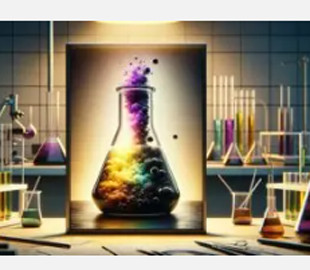
Harvard scientists have created a unique "intelligent liquid", which has been assigned a new class of substance. The latest material has adjustable elasticity, variables optical properties, variable viscosity, and even the ability to transition between Newtonian and non-Newtonian states.
The team of researchers is yet to reveal the liquid's exact composition while studying potential commercial applications. However, scientists believe that it may find application in programmed robots, intelligent shock absorbers and even optical devices capable of changing from transparent to opaque state.
The main innovation is the use of elastomeric spheres, which can change shape under pressure, radically changing the properties of the liquid itself. These changes include optical properties, viscosity and even compressibility. The researchers say: these characteristics open up new possibilities for liquids that adapt to the shape of their container. Solid materials will never acquire such properties.
To demonstrate the programming of the intelligent liquid, the researchers loaded it into a hydraulic robot-capture. The robot was able to “feel” and pick up extremely fragile objects, including an egg, a glass bottle, and a blueberry, without damaging them. Scientists noted that this was made possible by the variable viscosity of the material.
The ability of the liquid to automatically respond to different pressures and adapt its stiffness allows the work to pick up objects of different mass and fragility without additional programming. A change in the viscosity of a liquid occurs by transitioning between Newtonian and non-Newtonian states in response to a change in pressure.
In addition, the material has shown the ability to change its optical properties, easily switching between transparent and opaque states — this expands the range of its potential applications from optical to mechanical devices. The research is published in the journal Nature. Scientists emphasize — the discovery highlights the potential of intellectual fluid in various fields — from smart shock absorbers to programmable robots and optical applications, including electronic ink that changes color under pressure.
The research team continues to study the acoustic and thermodynamic properties of their discovery, pointing to its scalability and lightness in production. They are certain – such characteristics make it attractive for commercial and industrial use in the near future.

